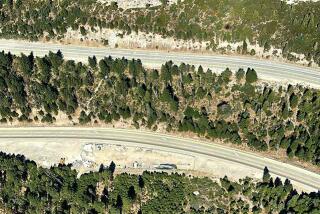Tesla Model X on Autopilot sped up seconds before deadly crash in Silicon Valley, report says
Reporting from San Francisco — Three seconds before a Tesla Model X on Autopilot slammed into a concrete barrier in March in Silicon Valley, killing the driver, the car sped up, the brakes were not applied, and there was no evasive action.
Those findings were disclosed Thursday in a preliminary report from the National Transportation Safety Board on the Highway 101 crash that took the life of Walter Huang, a 38-year-old software engineer at Apple.
Still, more questions than answers remain as the safety board continues its investigation into what role the driver and the Autopilot system each played.
According to the report, Huang had the Tesla sport utility vehicle’s Autopilot system engaged continuously for nearly 19 minutes before the vehicle hit the barrier at 9:27 a.m.
Autopilot includes adaptive cruise control and can automatically change lanes to pass cars on a freeway with a flick of the turn signal. The system attempts to maintain a human driver’s attention by keeping his or her hands on the steering wheel, with visual and audio warnings and eventually a vehicle shutdown if the driver does not comply.
During the nearly 19-minute period, Autopilot flashed two visual alerts and issued one auditory alert, the report said, with all three coming 15 minutes before the crash.
(In a blog post after the crash, Tesla said, “The driver had received several visual and one audible hands-on warning earlier in the drive,” but did not mention they’d come 15 minutes before the crash. The NTSB said only two visual warnings were provided.)
The safety board laid out a succession of events in the final seconds before the crash:
On the morning of March 23, Huang approached an interchange where cars can exit Highway 101 onto Highway 85 in Mountain View.
Seven seconds before the crash, according to the report, the car began to veer left, away from the vehicle it was following.
At six seconds, Autopilot no longer detected Huang’s hands on the steering wheel.
At three seconds, the car’s speed increased from 62 to 70.8 miles per hour. The brakes were not applied and there was no evasive steering before the car plowed into the butt end of a concrete barrier that divided regular lanes from the exit lane, the NTSB found.
The Tesla also collided with two other cars, which caused minor injuries to one driver.
Immediately after the crash, other motorists stopped and left their vehicles to pull Huang from his car. Moments later, the Model X was “engulfed” in a fire that originated in its battery pack and a thick cloud of black smoke rose over the freeway. Huang was taken to a nearby hospital where he died, the NTSB said.
The crushed Model X was transported to an impound lot the day of the crash. According to the NTSB, the battery started smoking again late in the afternoon. Five days later, the damaged high-voltage battery flamed up yet again. Firefighters were called in to douse the blaze.
Alain Kornhauser, head of the autonomous car engineering program at Princeton University, said the NTSB and Tesla have plenty of questions left to answer.
Among them:
- Were the driver’s hands on the wheel during the seven seconds prior to the crash?
- Did his hands override the Tesla’s steering command in any way?
- Did his hands initiate the left steering movement? If not, what did?
- During the last three seconds prior to the crash, did any of the sensors detect an object ahead?
Kornhauser noted that several of Tesla’s Autopilot crashes involve the car slamming into a stationary object, including a Tesla Model S’s rear-ending of a stopped Culver City firetruck on the 405 Freeway.
On May 11, a Model S with Autopilot engaged in South Jordan, Utah, also hit a stopped firetruck. Police reported the car had sped up about 3 seconds before the crash, which broke one of the driver’s feet.
Tesla Chief Executive Elon Musk complains often that the media focuse on crashes involving Tesla’s Autopilot and other robot-equipped vehicles, while ignoring scores of deaths caused every day by human drivers. Car crashes cause nearly 40,000 deaths annually in the U.S., according to recent figures.
In its post-crash blog post, the company said that Tesla cars on Autopilot had passed the same spot 85,000 times without incident. It also noted that a crash attenuator on the concrete barrier, a metal frame meant to absorb the impact of a crash, had been damaged in an earlier crash, so the impact of Huang’s car was more severe than it might otherwise have been.
Kornhauser said safety officials should determine why the attenuator had gone unrepaired for 11 days before Huang was killed.
Musk repeatedly has said cars are safer with Autopilot than without it. Safety experts have repeatedly said that may be, but there are not enough data yet to prove it statistically.
Twitter: @russ1mitchell
UPDATES:
1:00 p.m.: This story was updated with quotes from Alain Kornhauser at Princeton University.







